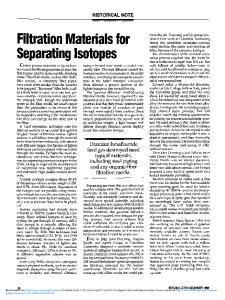On the local corrosion in a thin layer of electrolyte separating two materials: specific aspects and their contribution
- PDF / 619,829 Bytes
- 10 Pages / 595.276 x 790.866 pts Page_size
- 106 Downloads / 813 Views
ORIGINAL PAPER
On the local corrosion in a thin layer of electrolyte separating two materials: specific aspects and their contribution to pad-to-disk stiction in automobile brake system Rafik Tigane 1,2 & Denis Bauwens 1 & Olivier Hude 1 & Suzanne Joiret 2 & Michel Keddam 2 & Mireille Turmine 2 Vincent Vivier 2
&
Received: 14 September 2020 / Revised: 24 October 2020 / Accepted: 9 November 2020 # Springer-Verlag GmbH Germany, part of Springer Nature 2020
Abstract The stiction phenomenon which results in the adhesion of the brake pad to the disc brake of a vehicle has been investigated from a corrosion point of view. Asbestos-free organic pad that contains copper associated with a cast iron disc was investigated and compared to a model system which consisted in a ceramic pad (chemically inert) associated with the same cast iron disc. The whole system was described as a thin-layer cell of electrolyte and was studied using different electrochemical methods including polarization curves and impedance spectroscopy. The influence of the cell geometry was pointed out, but the corrosion of the system is enhanced due to the presence of copper in the pad. Indeed, the copper dissolves from the pad and redeposits on the disc. This was confirmed by scanning electron microscopy observations and Raman spectroscopy. A mechanism taking into account the thin-layer geometry was then proposed to account for the role of metallic additive (in this case copper) on the corrosion of the disc. Keywords Thin-layer electrochemistry . Electrochemical impedance spectroscopy . Copper dissolution . Galvanic corrosion
Introduction Vehicles are equipped with braking systems to slow it down or keep it static [1–4]. The disk brake consists mainly of a disc made of a graphite cast iron and a pad formulated with various friction materials, including asbestos-free organic pads, semimetallic pads and low-metal content pads [5]. It has been observed that after a long period of parking, the pad can stick strongly to the disc, especially in winter conditions, making it difficult to release the parking brake. In some cases, the tangential force exerted when starting the vehicle is far from being sufficient. This phenomenon, commonly referred to as stiction, occurs unexpectedly and may cause a temporary immobilization of the vehicle and/or the pad material to tear off.
* Mireille Turmine [email protected] 1
Hitachi Automotive Systems, 126 rue de Stalingrad, F-93705 Drancy, France
2
Laboratoire Interfaces et Systèmes Electrochimiques (LISE), Sorbonne Université, CNRS, 4 Place Jussieu, F-75005 Paris, France
Although stiction is a common problem in the automotive industry, to date, it is poorly documented and remains largely unexplained [6–8]. However, it has been reported that during stiction, iron oxide at the pad/disc interface is systematically observed and that, consequently, the stiction phenomenon would result in some way from the corrosion of the brake disc [8]. Indeed, this problem involves the same ingredients as crevice
Data Loading...











